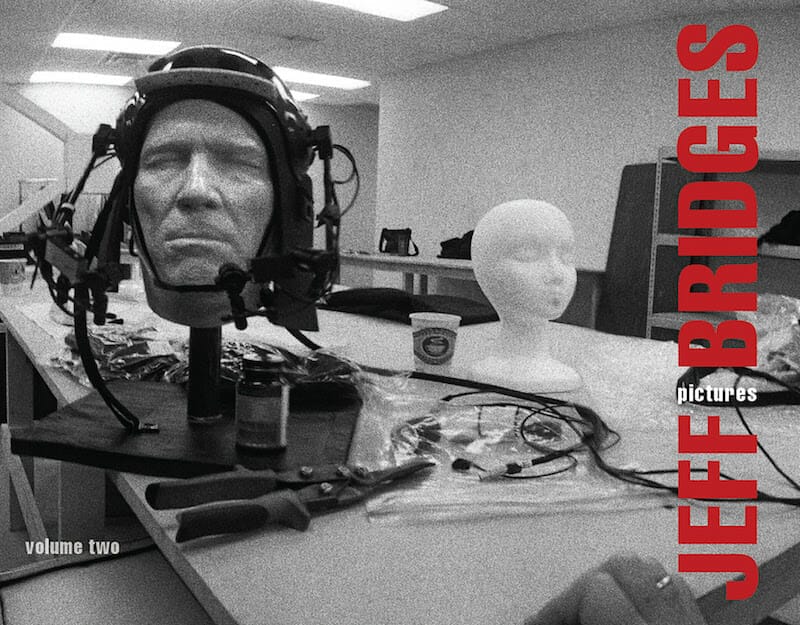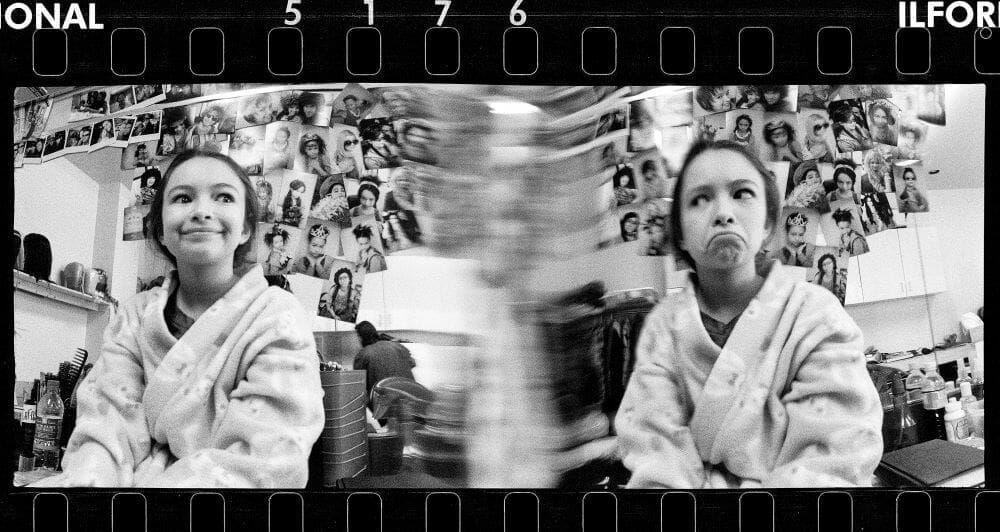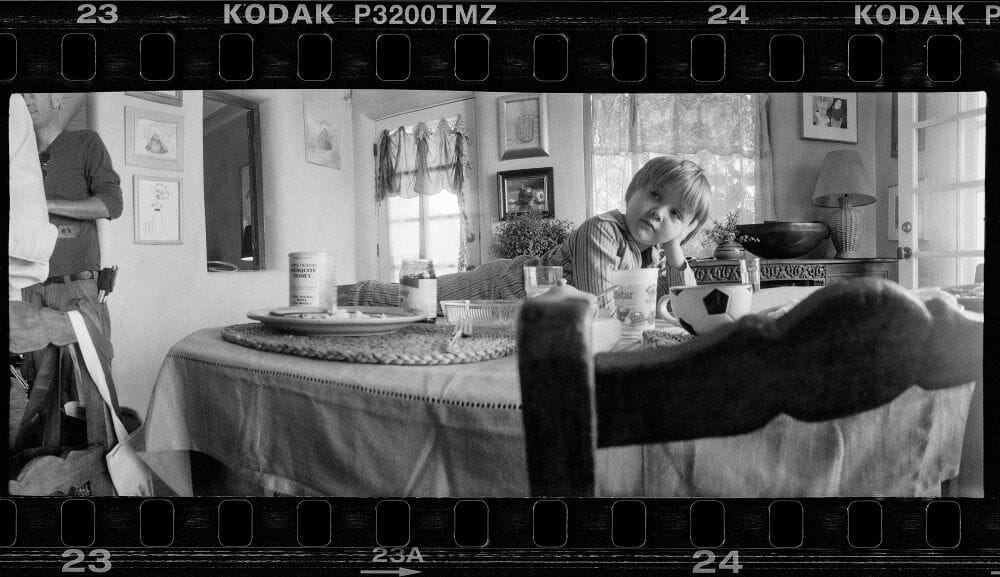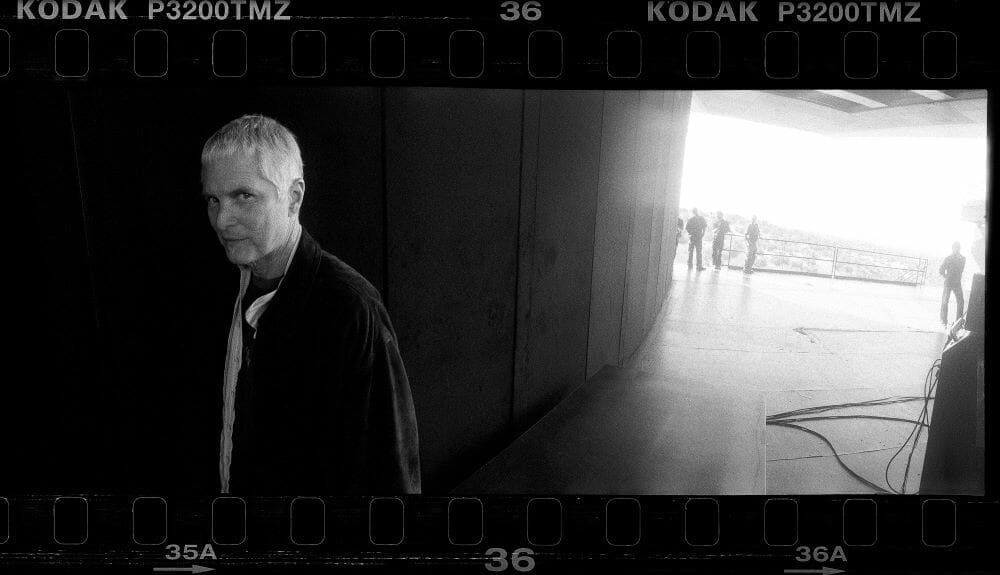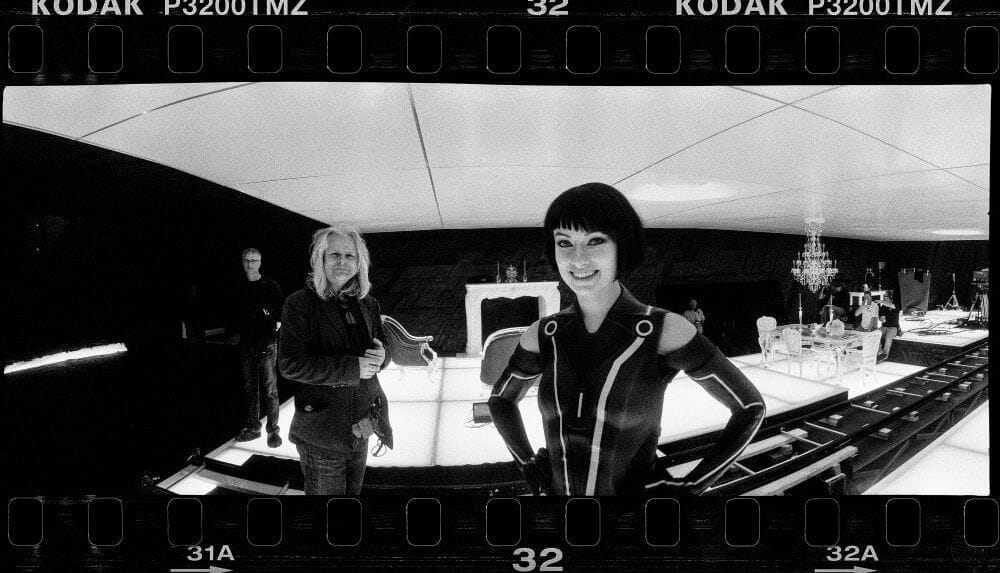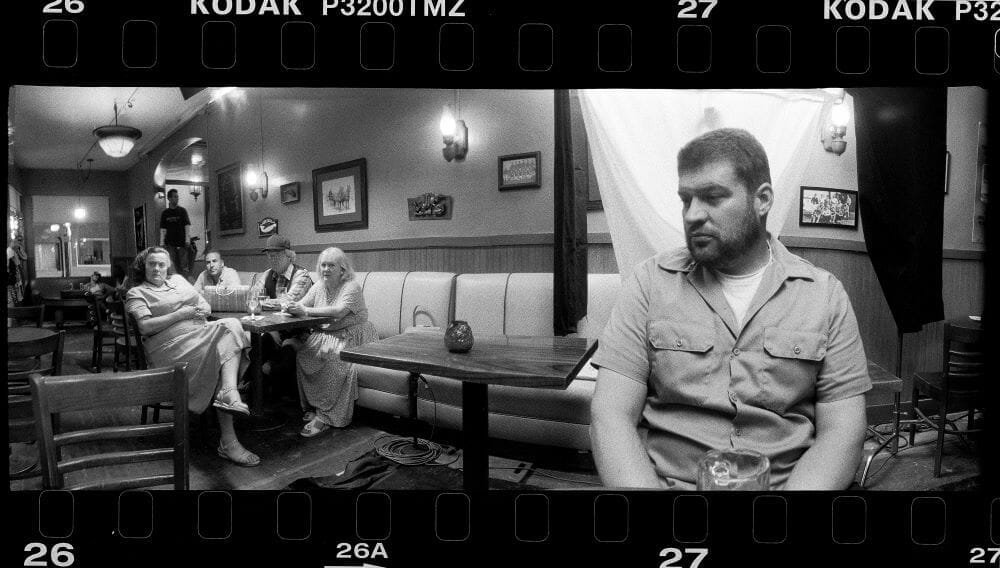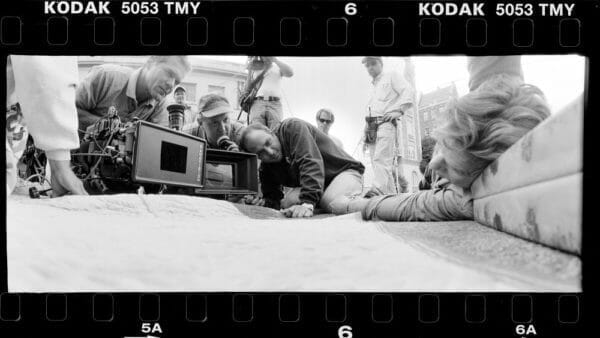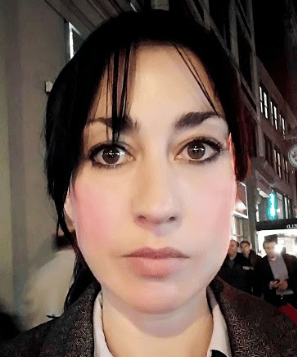Click here to read more Picture This Post reviews of HIGHLY RECOMMENDED books
In the forward to Jeff Bridges: Pictures, Volume II, in which Bridges lists his reasons for putting the book together, he admits to getting "off-track" via one or two tangents. Herein lies the essence of Jeff Bridges’ photographic work. Sixteen years after publishing his first photography book, he gives us the full picture, warts and all; unedited film sets divided into film industry categories and united by the panoramic swing of his camera.
The Camera’s The Thing in Jeff Bridges: Pictures, Volume II
The camera’s the thing: in this case, a 35mm Widelux with a panoramic swing-lens, sensitive shutter speed, a slit instead of a shutter, and a panning range just short of 180 degrees. Conveniently, Bridges describes the Widelux as “a bridge between still photography and moving pictures.” Co-star Karen Allen encouraged Bridges’ extracurricular activity on the set of Starman in 1984. A faithful sidekick to his camera, Bridges appears on the Widelux Wikipedia user content page where fellow user Stanley Kubrick gets second billing.
Bridges’ playfulness with exposure reruns a favorite of his, the same face caught twice in one shot with opposing comic/tragic facial expressions. Actors George Clooney, Meryl Streep and Jodelle Ferland ham up the premise.
To add to his portraits, he seizes upon the quiet moments of contemplative figures, either in-character, or enjoying the white noise gaps between the jigsaw pieces of filming, as with a solitary balding man with a passing resemblance to Robin Williams, who sits on the slope of a sand dune with bunched-up limbs, clasped hands and a large radio hung around his neck. Radio Man is a cult New York figure who has played cameos in many films, including A Dog Year with Bridges. Previously homeless and the owner of well-kept radio companions, Radio Man, according to Bridges, “always seems to know more about the movie you’re making than you do, or anyone else.” Bridges administers the same photographic affection to the cherub-faced child actor Jack Nation in Crazy Heart, the hard-boiled stare of one the film’s songwriters, Stephen Bruton, who died shortly after his photograph was taken, and Loyd Catlett, Bridges’ longtime friend and stunt double, who bathes meditatively in natural light against the fitting Seventh Son rugged landscape of British Columbia.
Elsewhere, the late and peculiarly arresting Harry Dean Stanton reminds us that he could haunt the background of a crowd of extras if he wanted to. We learn from Bridges’ writing that Stanton was cast as a blind man in The Open Road, but on the first day of shooting, refused to play his character as a man that cannot see. His demands were met, such is the power of unique star casting. More conventional star quality belongs to the routinely photogenic Olivia Wilde, who remains conspicuous despite sharing the frame with a game cinematographer, a dolly track, and a set that should never be allowed to escape the fictional software of Tron: Legacy.
Outside of movie stardom, in a room coerced by the Widelux pan into an unending corridor, sit the cast of The Amateurs, whose names the film trailer abstains from flashing upon the screen. These are the character actors, a term that could swallow its own discernibility if it weren’t for the fact that a movie star is behind the camera.
As selfies go, one of Bridges lying in the street for the gangster film Scenes of the Crime is a complex one, perhaps a cunning ruse. It is the camera operators who are under scrutiny, each of them examining Bridges with duplicated concentration, possibly a momentary freeze to satisfy Bridges’ camera.
From all the self-portraits, there is one that identifies Bridges as a bona fide movie star, from Crazy Heart for which he won the Oscar for Best Actor. With his arm extended for a group selfie, the producer and director of the film are footnotes to Bridges’ cinematic side profile. The same star quality applies to his Rooster character from the Coen brothers’ remake of True Grit. Angling behind the periphery of Rooster’s unseeing eye, the hangman is an item of strange beauty - a dummy suspended from a faraway tree as if the photograph had a second thought. Another hangman, minus the man - the ominous Iron Man suit, radiates anything but good guy heroism.
The dark pantomime continues with the late great special effects artist Stan Winston’s workshop. If transplanted to any area outside of filmmaking, the different compartments of Winston’s workshop could facilitate a hoarder’s paradise with apocalyptic leftovers, including a busy dissection table. The despotic presence of a giant baby doll head oversees the workers with synthetic black humor.
In a sunnier image, Seabiscuit writer and director Gary Ross demonstrates childlike delight at a hobby horse for grown-ups, ridden by Toby Maguire in mid-race jockey mode. A couple of pages later that horse embodies high tech sophistication when compared with the sinister rows of inflatable masked figures in Depression-era clothes, meant to look like a crowd at a horse race. Presumably, they are cheaper than real-life background extras.
Films are tiring beasts and to show this, Bridges captures tribes of busy activity in compartmentalized collaboration. In this reviewer's opinion, there are extraordinary compositions that repudiate the norm of elliptical vision, with carousel contortions and elongated shapes. In the text that accompanies select photographs, Bridges reads like some of his cinematic personas; part daydreaming Dude from The Big Lebowski, part inquisitive Starman, part True Grit protector. As strange as some of his photography is, there is nothing undisclosed or detached here. His photographs are, like he appears to be, entertaining, inclusive, and multifaceted. The pivoting wraparound feel of Bridges’ photographs increases tenfold thanks to his ability to access all areas. He is the eye of the film set, looking out from expedient angles at the organized chaos of filmmaking.
HIGHLY RECOMMENDED
Price $49.95
Published by powerHouse Books. For information and to purchase copies visit the PowerHouse books website
All photos shown here are from Jeff Bridges: Pictures, Volume II by Jeff Bridges.

